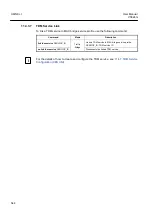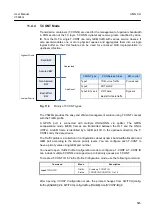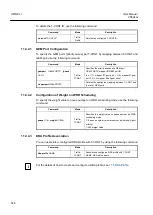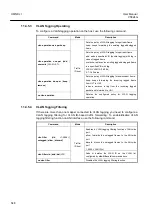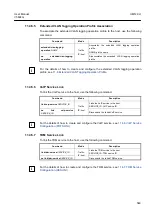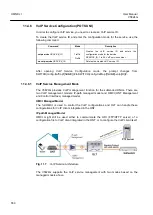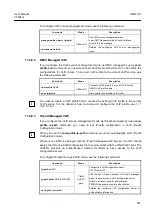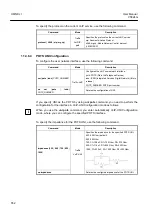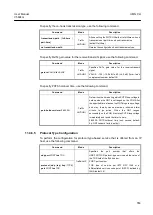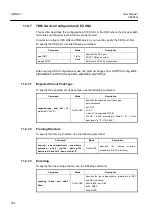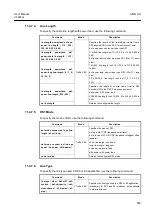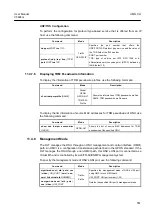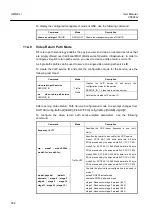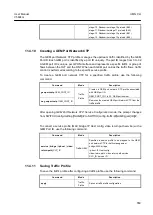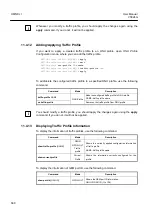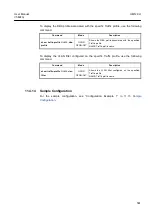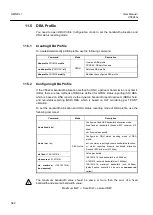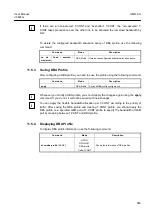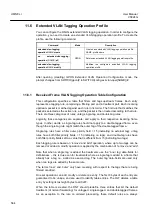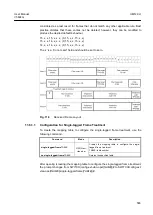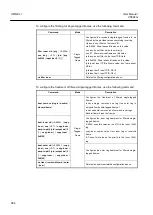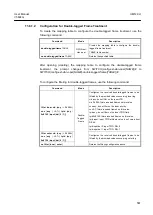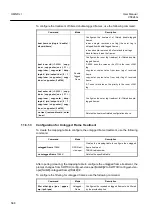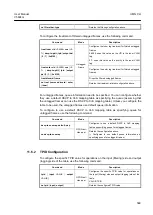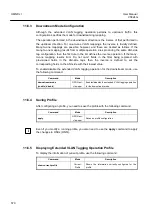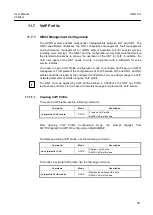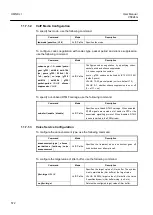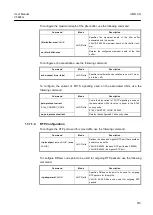
UMN:CLI
User Manual
V5824G
558
To display the configured management mode of ONU, use the following command.
Command
Mode
Description
show onu uni-mgmt
ONU-ID
GPON-OLT
Shows the management mode of ONU ID.
11.4.9
Video Return Path Mode
RF return path technology enables the pay-per-view and video-on-demand services that
are simply offered over traditional MSO (Multiservice Operator) infrastructure. In order to
configure video RF return path service, you need to create a Video return service ID.
A single traffic profile can be used to serve one single video return path service ID.
To create the VoIP service ID and enter the configuration mode for the service, use the
following command.
Command
Mode
Description
video-return-path-service
SERVICE_ID
Traffic-
Profile
Creates the VoIP service ID and enters the
configuration mode for the service.
SERVICE_ID: 1, Video return service number
no
video-return-path-service
SERVICE_ID
Deletes the created VoIP service ID.
After opening
Video Return Path Service Configuration
mode, the prompt changes from
SWITCH(config-traffic-pf[
NAME
])# to SWITCH(config-traffic-pf[
NAME
]-vrp[
ID
])#.
To configure the video return path service-related parameters, use the following
command.
Command
Mode
Description
frequency
HERTZ
Traffic-VRP
Specifies the VRP tunner frequency to use. (unit:
Hertz)
vrp
{
mode1
|
mode2-256k
|
mode2-1m
|
mode2-3m
}
Specifies the format to be used for the VRP service.
mode1: SCTE 55-1 (256 kbit/s data rate, 62 byte
PDUs, preceded by the unique word 0xCC CC CC 00)
mode2-1m: SCTE 55-1 (1.544 Mbit/s data rate, 59 byte
PDUs, preceded by the unique word 0xCC CC CC 0D)
mode2-256k: SCTE 55-1 (256 kbit/s data rate, 59 byte
PDUs, preceded by the unique word 0xCC CC CC 0D)
mode2-3m: SCTE 55-1 (3.088 Mbit/s data rate, 59 byte
PDUs, preceded by the unique word 0xCC CC CC 0D)
mode1-physical
{
default
|
alternate
} {
stage-6
|
stage-7
|
stage-8
|
stage-9
|
stage-10
|
stage-11
|
stage-12
|
stage-13
}
Controls the physical layer configuration to be used in
mode 1.
default: DQPSK default mode
alternate: DQPSK alternate mode
stage-6: Randomizer stage 6 preload (Bit 7)
stage-7: Randomizer stage 7 preload (Bit 6)
stage-8: Randomizer stage 8 preload (Bit 5)
stage-9: Randomizer stage 9 preload (Bit 4)

